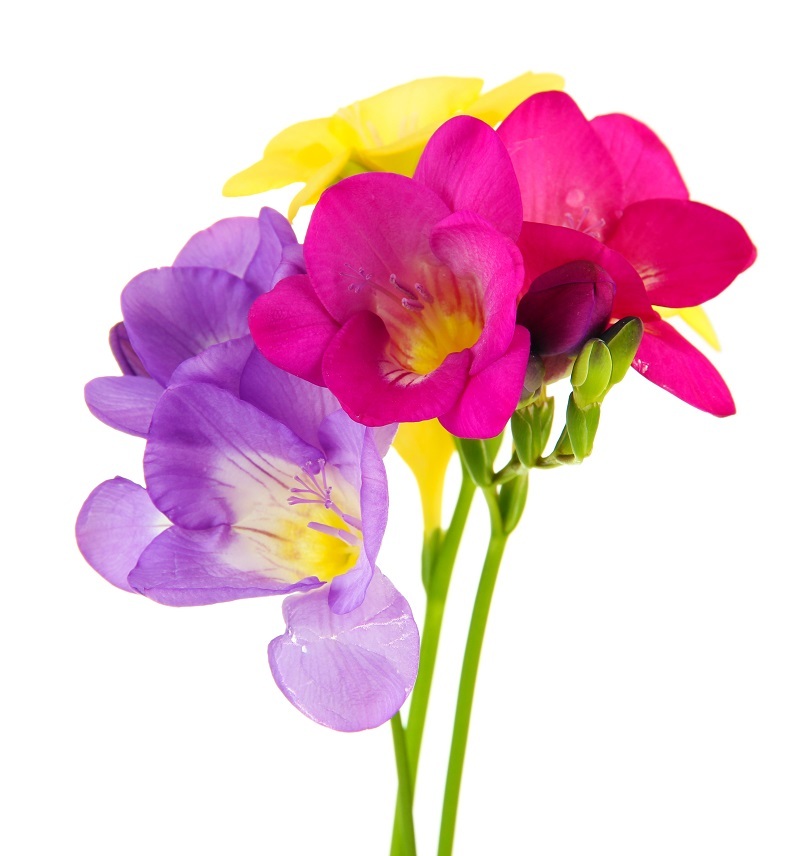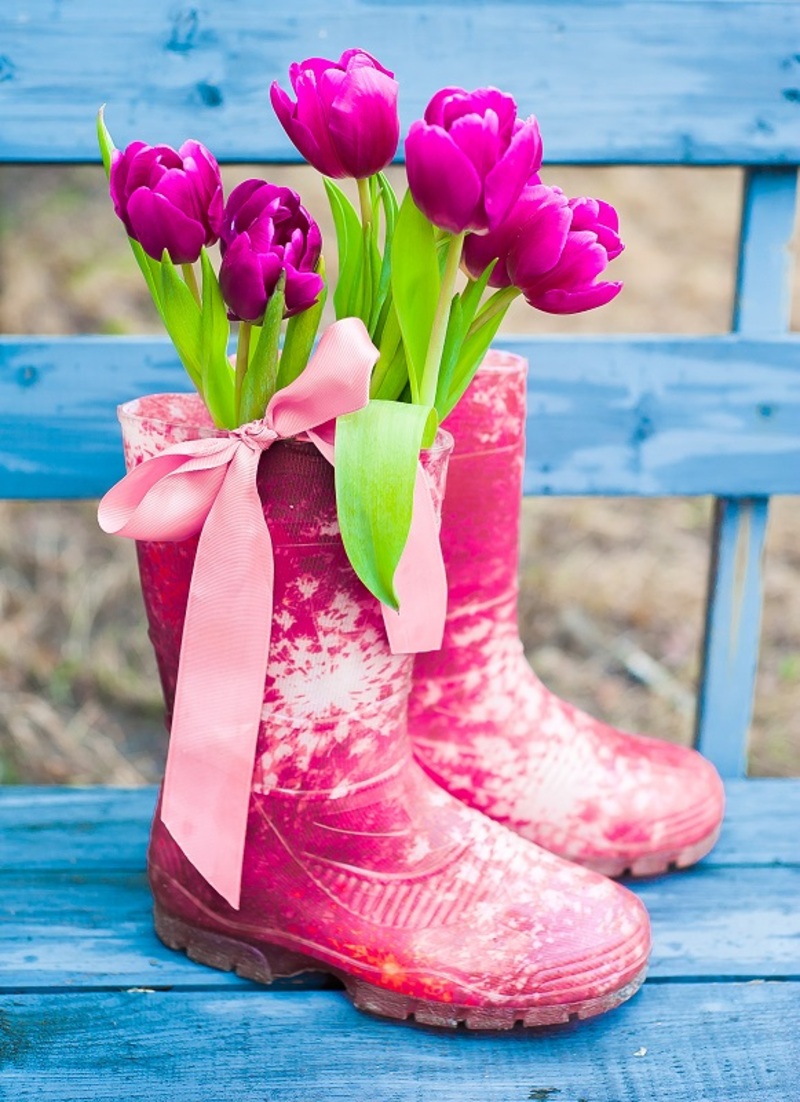Ensuring Hydrangeas Thrive Through the Seasons
Posted on 03/07/2025
Ensuring Hydrangeas Thrive Through the Seasons: The Ultimate Guide
Hydrangeas are beloved by garden enthusiasts for their spectacular blooms and remarkable versatility. From the lush mopheads to the delicate lacecaps, these flowering shrubs can transform a simple yard into an enchanting garden. Yet, to ensure hydrangeas thrive through the seasons, gardeners must understand their unique requirements during each part of the year. In this comprehensive guide, we'll explore how to make hydrangeas flourish all year round, so you can enjoy their beauty no matter the month.
Understanding Hydrangea Basics
Hydrangeas belong to the genus Hydrangea, with the most common varieties including Hydrangea macrophylla (Bigleaf), Hydrangea paniculata (Panicle), Hydrangea quercifolia (Oakleaf), and Hydrangea arborescens (Smooth). Each type exhibits unique characteristics, blooming behaviors, and care requirements.
- Bigleaf Hydrangeas: Popular for their large, vibrant blooms that often range in color from blue to pink, depending on soil pH.
- Panicle Hydrangeas: Known for cone-shaped flower clusters, high tolerance for sun, and adaptability to pruning.
- Oakleaf Hydrangeas: Distinctive for their lobed leaves and ability to thrive in shadier spots, featuring white blooms that gradually turn pink, then brown.
- Smooth Hydrangeas: Favored for their hardiness and ability to produce flowers on new wood, making them easier to prune.

Choosing the Right Location for Your Hydrangeas
Ensuring hydrangeas flourish begins with selecting the optimal site. These plants typically prefer:
- Partial shade: Protection from hot afternoon sun helps prevent wilted leaves and scorched blooms.
- Well-draining soil: Soggy roots can lead to rot, so amend heavy soils with organic matter or compost.
- Adequate spacing: Allow for good air circulation to deter fungal diseases.
By providing the right environment, you set your hydrangeas up for year-round success.
Seasonal Hydrangea Care: A Step-by-Step Annual Plan
To truly ensure hydrangea success through the seasons, tailor your care routine to each period of the gardening year. Below, we break down the essential steps for spring, summer, autumn, and winter.
Spring: Nurturing New Beginnings
As temperatures rise and buds swell, spring hydrangea care is critical:
- Pruning: Learn your hydrangea variety. Prune macrophylla and quercifolia types lightly to remove dead wood, as these bloom on old wood. For paniculata and arborescens, prune hard to encourage vigorous new growth.
- Feeding: Apply a balanced, slow-release fertilizer or one formulated specifically for woody shrubs.
- Mulching: Add a 2-3 inch layer of organic mulch to retain moisture, suppress weeds, and regulate soil temperature.
- Watering: As growth resumes, ensure the soil remains evenly moist, especially if rainfall is limited.
Summer: Maintaining Blooms and Health
Hydrangeas in summer dazzle with bold, vibrant flowers, but this is also when they face environmental stresses:
- Watering: Deeply water at the base 1-2 times weekly, increasing frequency during hot spells. Avoid wetting foliage to reduce disease risk.
- Shade Protection: If your region has scorching afternoons, erect temporary shade cloth or plant taller companions for protection.
- Deadheading: Remove faded blooms to promote continued flowering and tidier appearance.
- Pest and Disease Monitoring: Watch for powdery mildew, aphids, and spider mites. Treat early if signs appear.
- Soil Testing: For color changes, test pH (below 6 for blue, above 7 for pink exposed on Bigleaf varieties) and amend with sulfur or lime accordingly.
Autumn: Preparing for Dormancy
In fall, hydrangeas begin to slow down, setting the stage for next year's display:
- Hydration: Continue to water regularly until the ground freezes, preventing root desiccation.
- Fertilization: Cease fertilizing in September to discourage tender new growth prone to frost damage.
- Leaf Cleanup: Rake up fallen leaves to reduce overwintering pests and fungal spores.
- Planting: Fall is an excellent season to plant new hydrangeas, giving roots time to establish before winter.
Winter: Protecting for the Future
Proper winter hydrangea care is vital for a strong rebloom next year:
- Mulch Heavily: Add an extra 3-6 inches of mulch around the base to insulate roots, especially in colder climates.
- Stem Protection: For macrophylla varieties, wrap stems with burlap or cover with leaves to shield old-wood buds from extreme cold.
- Pruning: Avoid heavy pruning late in fall or winter--wait until spring for most hydrangea types.
- Snow and Ice: Gently brush off accumulations to prevent breakage; avoid using salt nearby, which can harm hydrangeas.
Optimizing Soil for Year-Round Hydrangea Success
The foundation of ensuring hydrangeas thrive throughout the year lies in their soil:
- Soil Texture: Hydrangeas favor loam but adapt well to most soils if well-drained.
- Soil pH: Especially relevant for Bigleaf hydrangeas, pH dictates flower color. Acidic soils (<6.0) yield blue blooms, while alkaline soils (>7.0) foster pink shades.
- Organic Matter: Regularly amend soil with compost or decomposed leaf mold for nutrients and improved moisture retention.
- Testing: Conduct a soil test every 2-3 years to monitor nutrient levels and pH adjustments.
Fertilization Best Practices for Hydrangeas
Consistent feeding is imperative to help hydrangeas flourish each season. Consider these rules:
- Start in Spring: Use a granular slow-release fertilizer, applying as new leaves emerge.
- Sparingly in Summer: Only reapply if growth stalls; over-fertilization can limit blooms and cause weak stems.
- Avoid Fall Fertilization: Late feedings encourage soft growth that may not survive winter.
- Type Matters: Opt for balanced (10-10-10) formulations, or seek blends tailored for flowering shrubs.
Mastering Hydrangea Pruning
Pruning hydrangeas can be confusing due to different blooming habits. Here's how to get it right for a healthy, blooming shrub:
Old Wood Bloomers
- Hydrangea macrophylla & Hydrangea quercifolia: Prune only after flowering (mid to late summer) to avoid removing next year's buds. Focus on removing spent blooms, dead stems, and minor shaping.
New Wood Bloomers
- Hydrangea paniculata & Hydrangea arborescens: Cut back hard in late winter or early spring. This encourages robust growth and more flowers.
Always use sharp, disinfected tools, and avoid drastic pruning in fall or winter, which can result in fewer blooms.
Watering Insights: Keeping Hydrangeas Hydrated
Moisture is key to vibrant hydrangeas, but overwatering is a common mistake. To ensure exceptional health:
- Monitor Rainfall: Hydrangeas need about 1 inch of water per week during the growing season. Supplement only when rainfall is insufficient.
- Deep Watering: Give plants a slow, thorough soak at the root zone, rather than frequent shallow sprays.
- Mulch Wisely: Organic mulch helps retain moisture and keeps roots cool in summer.
- Container Hydrangeas: Pots dry out quickly--check soil daily and water when the top inch feels dry.
Dealing with Common Hydrangea Problems
No matter how attentive you are, issues can arise. These tips help prevent and manage problems, ensuring your hydrangeas survive and thrive through every season:
Fungal Diseases
- Prevention: Ensure good air circulation, avoid overhead watering, and clean up debris.
- Treatment: Apply fungicides labeled for ornamentals if leaf spot or powdery mildew appears.
Pests
- Common Invaders: Aphids, spider mites, and scale insects. Inspect regularly and use insecticidal soap or neem oil as needed.
Leaf and Bud Issues
- Wilting: Often related to over- or under-watering, or poor soil drainage.
- Bud Drop: Cold snaps or late prunes may be to blame. Provide winter cover and prune at the right time.
Hydrangea Varieties and Their Seasonal Appeal
For continuous, year-round appeal, select a mix of hydrangea species and cultivars. Some varieties bloom early, others extend into fall, and all offer interest, even in winter, with textured bark or dried flower heads.
- 'Annabelle' (Smooth): Large white blooms, reliable summer flowers.
- 'Limelight' (Panicle): Greenish blooms maturing to pink, extends into late summer and early fall.
- 'Endless Summer' (Bigleaf): Reblooming variety, color changeable by soil pH.
- 'Snow Queen' (Oakleaf): Early summer blooms and striking red fall foliage.
Mixing these in your landscape ensures hydrangea color and texture for multiple seasons.

Creative Uses and Design Ideas for Year-Round Interest
Hydrangeas can be stars in various landscape settings:
- Mixed Shrub Borders: Pair with evergreens, roses, or other flowering shrubs for continuous appeal.
- Woodland Gardens: Oakleaf and Bigleaf varieties excel in dappled shade, creating a naturalistic look.
- Container Displays: Use compact hydrangeas on patios for mobile color and interest.
- Dried Arrangements: Panicle and Bigleaf hydrangeas' flowers are perfect for fall and winter displays inside your home.
Final Thoughts on Ensuring Hydrangeas Thrive Through Every Season
*Hydrangeas reward thoughtful gardeners with year-round beauty, but success depends on understanding their needs as the seasons change.* Consistent attention to watering, soil amendments, pruning, and protection will help your hydrangeas thrive no matter the weather. By selecting suitable varieties and providing *seasonal care*, you'll ensure these stunning plants remain the crown jewels of your garden for years to come.
Remember:
- Choose the right variety and location
- Monitor soil moisture and pH
- Feed judiciously
- Prune at the appropriate time
- Protect from extreme temperatures and monitor for pests
With these practices, ensuring hydrangeas thrive through the seasons transforms from a challenge to a joy, rewarding you with endless blooms and vibrant garden interest all year long.
Latest Posts
Unlocking the Symbolic Meanings Within the Palette of Peony Colours
Reveal Your Personality's Flower Equivalent
Ensuring Hydrangeas Thrive Through the Seasons





